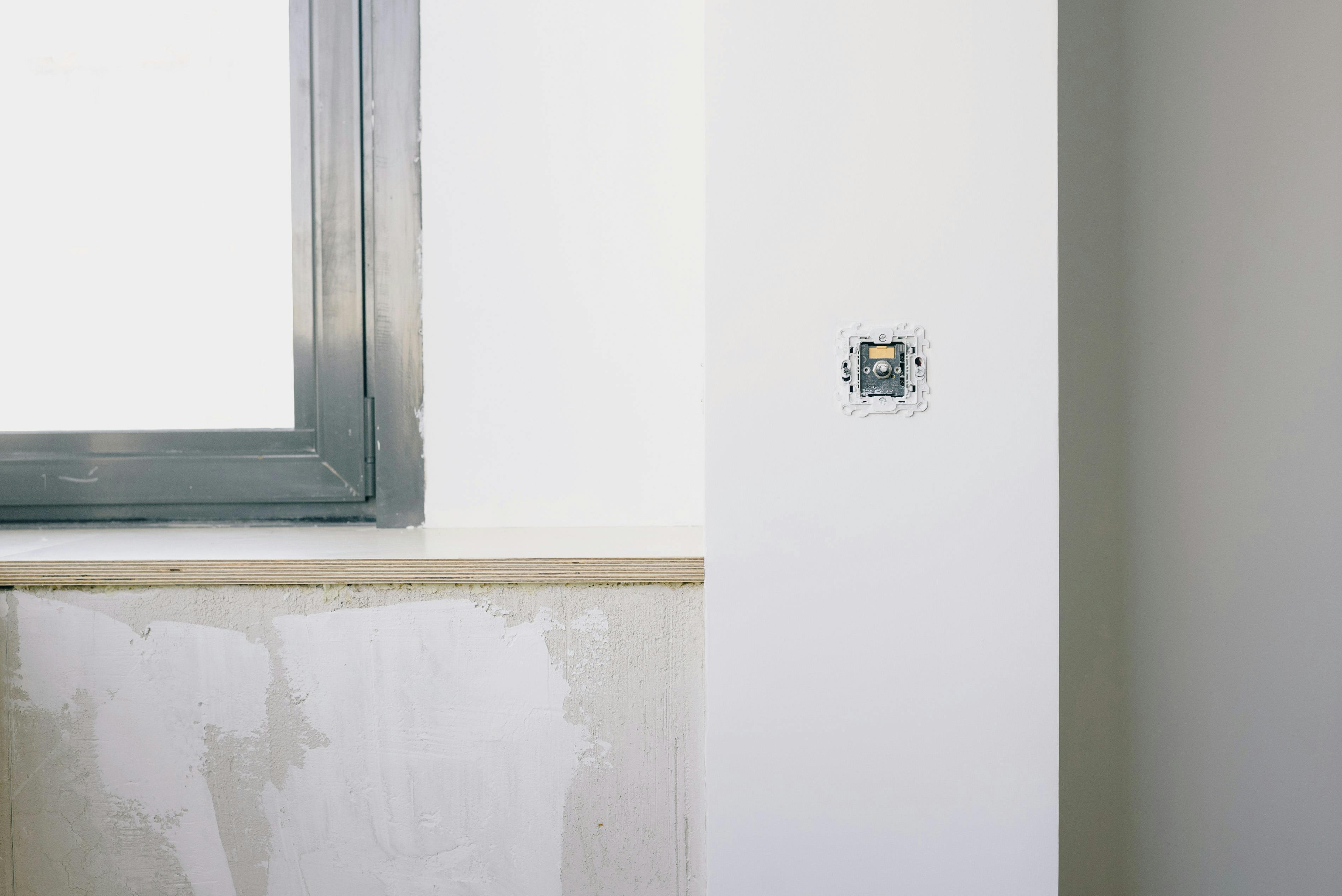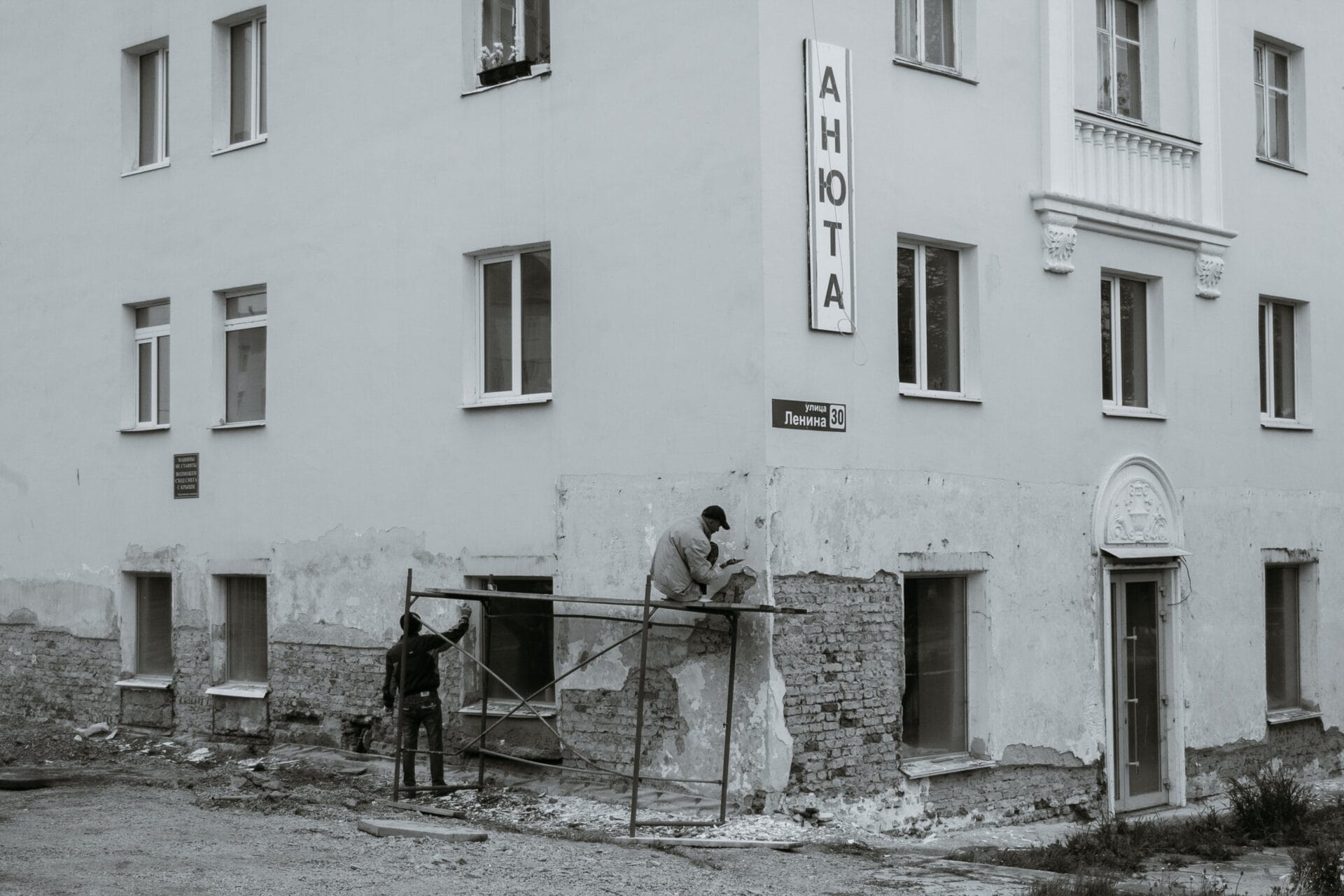If you have stucco on the exterior of your home, chances are you’ve encountered some water damage at some point. Water damage can cause stucco to crack, peel, or chip away, and if not properly repaired it can lead to further damage. Fortunately, repairing water damaged stucco is a relatively simple process that anyone can do if they have the right supplies and knowledge. In this guide, we’ll go over the steps for repairing water damaged stucco so that you can restore your home’s exterior and make it look as good as new.In order to identify water damage on stucco, you should first visually inspect the stucco for any cracking or discoloration. Additionally, look for any mold, mildew, or efflorescence (white salt deposits). Check if the stucco is soft or spongy to the touch, as this could be a sign that water has been present. You may also want to check for any water stains around windows and doors. Lastly, if you have access to the attic or crawl space, inspect for moisture or water damage there as well.
Assessing The Extent Of Water Damage On Stucco
Water damage can cause stucco to deteriorate and look unsightly. It is important to assess the extent of the damage in order to determine the best course of action for repair. In order to assess the extent of water damage on stucco, one must first understand what stucco is and how it reacts to water. Stucco is a type of plaster created from cement, sand, and lime that is applied directly to walls or other surfaces. When it becomes wet, stucco can absorb moisture which can cause it to weaken and even crack over time. This makes it important to take steps to prevent water damage before it has a chance to occur.
One way to assess the extent of water damage on stucco is by looking at the color of the material itself. If the stucco appears discolored or faded, this could be an indication that there has been some water seepage into the material. Furthermore, if there are any visible cracks in the stucco, this could also be an indication that there has been some water damage. In addition, any areas where there is peeling or bubbling of the material could also indicate that there has been some sort of water exposure.
Another way to assess water damage on stucco is by feeling for wetness in certain areas with your hands. Any areas where you feel moisture or dampness could be an indication that there has been some water seeping into the material. Finally, if you can see any signs of mold growth on your stucco walls, this could be another sign that there has been some sort of prolonged exposure to moisture within your home or business premises.
Once you have assessed the extent of water damage on stucco, you should take steps towards repairing any damaged areas in order to prevent further deterioration from occurring. Depending on how severe the damage is, different repair strategies may need to be employed in order to restore your walls back into their original condition. Taking these steps can help protect your investment and keep your property looking its best for years to come!
Steps to Repair Water Damaged Stucco
The first step in repairing water damaged stucco is to identify the source of the water. This can be done by looking for any visible signs of water damage, such as discoloration or mold growth. If the source is not immediately apparent, then it may be necessary to conduct a more thorough inspection. Once the source has been identified, it is important to make sure that it is addressed and any necessary repairs are completed.
The next step is to repair the stucco itself. This should involve cleaning off any mold or mildew that has developed on the surface, as well as removing any loose or damaged material. Any cracked stucco should be patched up with a patching compound that is designed specifically for stucco repair. After this has been done, the area should be sealed with a waterproofing sealant in order to prevent further water damage.
The final step in repairing water damaged stucco is to finish it off with a fresh coat of paint. This will help protect the area from further damage and will also help restore its original look and feel. It’s important to choose a high-quality paint that is designed for use on stucco surfaces in order to ensure that it lasts as long as possible. After painting, make sure that all edges are properly sealed and protected from moisture so that the repair job will last for years to come.
By following these steps, you can easily repair water damaged stucco and restore its original beauty and strength. Just remember to take your time when conducting any repairs and always use high-quality materials so that your work lasts for years to come!
Cleaning Up After Water Damage To Stucco
Water damage to stucco can be a costly repair, but it is essential for the longevity of your home. While the damage can be extensive, it is important to take steps to clean up after water damage and reduce any further damage. This article will discuss the steps you need to take when cleaning up after water damage to stucco.
The first step in cleaning up after water damage is to identify the source of the water. If there is a leaking roof or plumbing issue, this should be addressed before any other steps are taken. Once the source of the water has been identified, it is important to remove any standing water with buckets or a wet-dry vacuum.
Once all standing water has been removed, it is time to start drying out the stucco and underlying structures. This can be done by opening windows and doors in the affected area and using fans and dehumidifiers to help speed up the drying process. It may also be necessary to remove some portions of damaged stucco if doing so will help reduce risk of further water infiltration into other parts of your home’s structure.
After all standing water has been removed and everything has dried out, it is time to assess how much repair work needs to be done. If only a small area was affected, repairs may be as simple as patching or replacing a few pieces of stucco; however, if more extensive repairs are needed you may need the assistance of a professional contractor. In either case, it is important that all repairs are done properly in order to prevent future problems down the road.
Finally, once all repairs have been completed it is important that you seal any newly repaired areas with an appropriate sealant. This will help protect your home from further moisture infiltration and ensure that your stucco looks its best for years to come.
Cleaning up after water damage can seem like an overwhelming task; however, following these steps can help ensure that your repairs are done correctly and that any future problems are avoided. Taking care of issues with your home’s stucco right away can save you money in the long run by reducing chances for more expensive repairs down the line!
Preparing The Surface For Repairing Water Damaged Stucco
When repairing water damaged stucco, it is important to prepare the surface correctly. The first step is to remove any loose or damaged stucco. Use a chisel or small hammer to gently remove any loose pieces of stucco that are not firmly attached to the wall. Once all the loose pieces have been removed, use a wire brush to clean off any dirt or debris from the wall. This will help ensure that the new stucco adheres properly and seals out moisture.
Next, use a damp cloth to wipe down the area and make sure it is free of dust and dirt. Allow the area to dry completely before continuing with repairs. If there are any visible cracks in the stucco, these should be filled with caulk before applying new stucco. This will help prevent additional water damage from occurring in these areas.
Once all of the necessary preparation steps have been taken, it is time to begin repairing water damaged stucco. Start by mixing up a batch of stucco according to manufacturer instructions and apply it using a trowel in even layers over the affected area. Allow each layer to dry completely before adding an additional layer as needed until you have achieved a uniform texture and thickness. Finally, finish up by painting or sealing your newly repaired stucco for added protection against future water damage.

Applying A Sealant To Help Prevent Future Water Damage To Stucco
Water damage to stucco is a common problem that can lead to costly repairs. Applying a sealant is an effective way to help prevent future water damage. The sealant will act as a barrier, protecting the stucco from moisture and other elements that can cause damage.
When applying a sealant, it is important to make sure the surface of the stucco is clean and dry before beginning. Any dirt or debris should be removed before applying the sealant. A power washer can be used to ensure that the surface is completely clean, which will help the sealant adhere better.
Once the surface is clean and dry, it’s time to begin applying the sealant. It’s best to use a brush or roller for this job. Start at one end and work your way around in sections, making sure you apply an even layer of sealant over the entire area. Allow each section to dry thoroughly before moving on to the next section. Depending on the type of sealant you are using, it may need several coats in order for it to be effective.
Once you have applied all of the necessary coats of sealant, you should wait at least 24 hours before exposing the stucco to any moisture or other elements that could cause damage. This will help ensure that the sealant has had enough time to set and form an effective waterproof barrier around your stucco.
Applying a sealant is an easy way to help prevent future water damage on your stucco surfaces. Taking these steps now can save you time and money in costly repairs down the road!
Patching Holes And Cracks In Water Damaged Stucco
Repairing water damaged stucco can be a difficult and time-consuming task. It is important to patch any holes or cracks as soon as possible to prevent further damage from occurring. Patching holes and cracks in water damaged stucco can be done in a few simple steps.
The first step is to clean the area around the hole or crack. Use a brush and warm soapy water to remove any dirt or debris that might be lodged in the area. Once the area is clean, let it dry completely before proceeding with any repairs.
Next, you will need to fill the hole or crack with a patching compound specifically designed for stucco repair. Apply the compound using a putty knife and smooth it out so that it is even with the surrounding surface. Allow the patch to dry completely before proceeding with any additional repairs.
Once the patch has dried, you may need to add a sealant to protect it from further water damage. Some sealants are specifically designed for stucco repair, so make sure you use one that is made for this purpose. Apply the sealant using a brush and allow it to dry completely before painting over it with an exterior paint that matches your stucco color.
By following these simple steps, you can easily repair holes and cracks in water damaged stucco quickly and effectively. Make sure you take your time when completing these repairs in order to ensure they last as long as possible and protect your home from further damage from moisture and water infiltration.
Finishing Touches For Repairing Water Damaged Stucco
Once the damage from water has been repaired to your stucco, it is important to take the necessary steps to ensure that the finished product looks good and is sealed properly. When painting stucco, you will want to use a coat of primer first to help seal in moisture and enhance the adhesion of the paint. Once the primer has been applied, use a high-quality paint specifically designed for outdoor use. Make sure to apply two coats of paint, allowing each coat to dry completely before applying another. If you are using a sprayer for painting, make sure to keep your distance and move in a steady motion. This will help you avoid any drips and runs in the paint.
Once you have completed painting your stucco, apply a sealant over it. This will help protect against future water damage and can provide an additional layer of protection against extreme weather conditions. Make sure to follow all directions on the sealant package for proper application. After the sealant has been applied, allow it plenty of time to dry before exposing it to rain or harsh weather conditions.
Finally, inspect your stucco regularly for any signs of wear or damage from water or other elements. If you notice any signs of damage, repair it immediately using the same methods that were used when initially repairing the stucco damage due to water infiltration. With regular inspections and maintenance, your stucco should remain looking great for years!

Conclusion
Repairing stucco that has been damaged by water is a job that may require professional help. However, if the damage is minimal and the stucco is in good condition, homeowners can follow these steps to repair their home. First, inspect the area for any signs of moisture and make sure to seal any cracks or holes that may be allowing water in. Additionally, patch up any chips or weak spots with a cement-based patching compound. Finally, apply new coats of stucco as needed to finish the repair job. With proper preparation and attention to detail, homeowners can successfully repair their water-damaged stucco.
Repairing water-damaged stucco can be a tedious process, but it doesn’t have to break the bank. If done correctly and with careful attention to detail, homeowners can successfully repair their own stucco without having to hire expensive professionals. Taking the time to properly prepare the area and patch up any weak spots before applying new coats of stucco will ensure that the job is done right and will last for years to come.

